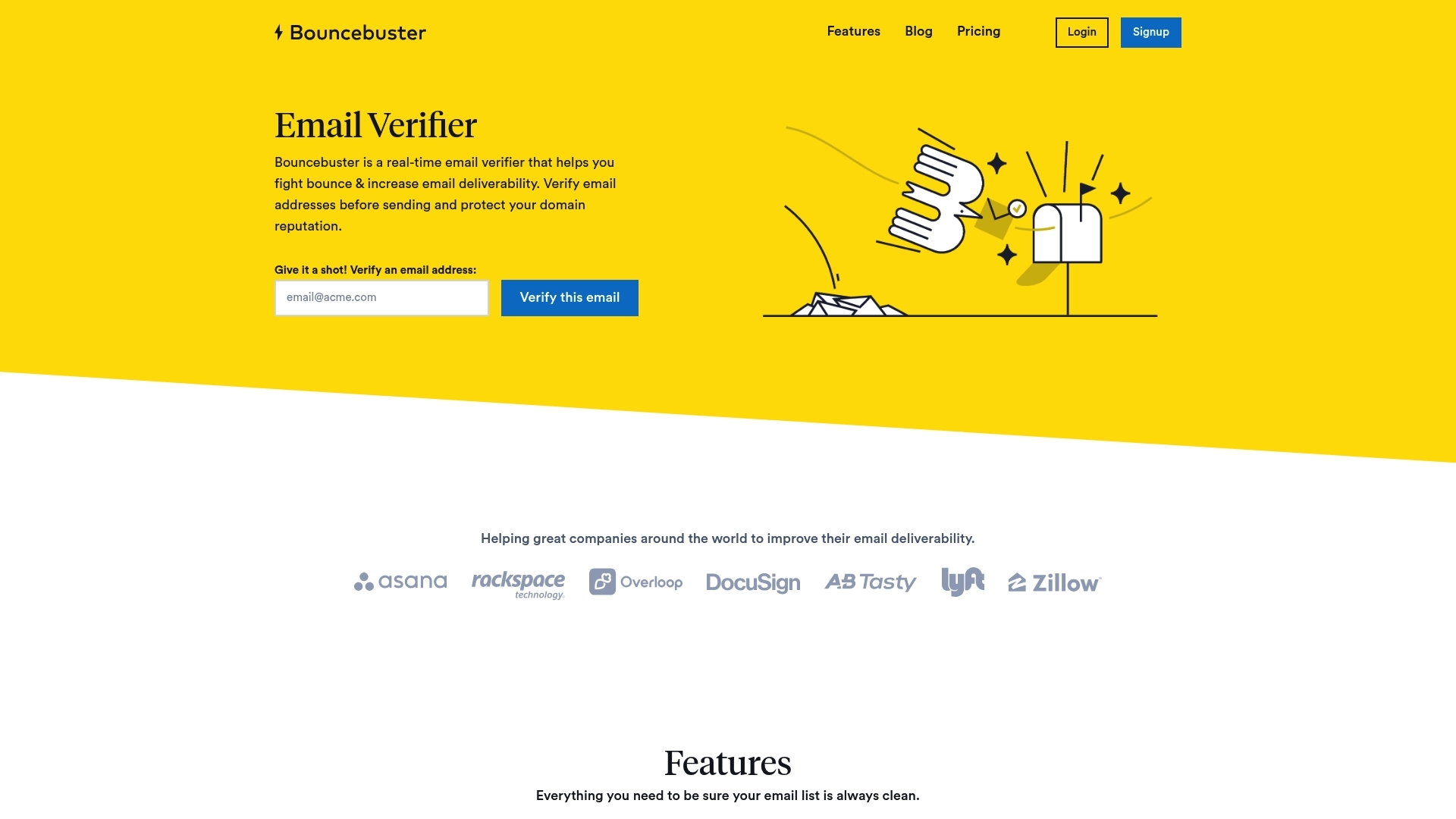The Ultimate Guide to Subscriber Validation: Best Practices for Email Marketing Success
Email marketing works best when messages reach real people—but as subscriber lists grow, so do the challenges. Businesses face issues like list decay, where outdated or incorrect email addresses accumulate over time. High bounce rates signal that many emails never make it to their intended recipients. This not only wastes resources but also harms sender reputation and lowers overall campaign results.
Deliverability depends on sending emails to verified, active subscribers. Invalid or old addresses lead to blocked campaigns, increased spam complaints, and even potential blacklisting by internet service providers. Maintaining accurate lists helps marketers ensure their messages reach inboxes, not spam folders, supporting better open rates and engagement.
Subscriber validation resolves these pain points by identifying and removing bad email addresses before delivery. Solutions like Bouncebuster support businesses in this process by verifying addresses at scale, helping preserve deliverability and campaign reliability without slowing workflows. For more expert advice and tips, visit our Blog.
Why Subscriber Validation Is Crucial for Marketers
Email lists often lose quality over time, filled with invalid addresses, expired domains, or users who mark messages as spam. If marketers send campaigns to these unverified recipients, several issues can arise that directly impact results and sender reputation.
Risks of Unverified Lists
One key risk is a high bounce rate. Email bounces, which occur when emails cannot reach their destination, often result from outdated or mistyped addresses. High bounce rates signal to mailbox providers that your list quality is poor, which can trigger spam filters and make future campaigns less likely to reach the inbox. Increase your understanding of sender reputation and its importance for ongoing deliverability.
Sending messages to inactive or fake accounts can also lead to more spam complaints. Recipients who do not recognize your emails or who never requested them may flag them as unwanted, harming sender credibility. Over time, this can damage your sender reputation and can even cause your domain to be blacklisted by email service providers.
Benefits of Subscriber Validation
Taking steps to validate subscribers offers clear advantages for email performance. Clean lists produce higher engagement rates and increase the chance that messages land in the primary inbox instead of the spam folder. Through validation, you also remove harmful addresses, maintain list hygiene, and reduce long-term costs related to email marketing efforts.
Marketers benefit from improved ROI because resources go to real, engaged subscribers rather than dead or irrelevant accounts. Ongoing hygiene stops issues before they start. Advanced tools, such as those offered by Bouncebuster, automate validation so you can manage even large lists effectively, saving time and safeguarding inbox delivery.
Core Subscriber Validation Methods Explained
Every email address on a subscriber list poses a risk or an opportunity. Validating these addresses correctly ensures campaigns reach real users and protect sender reputation. Marketers rely on several core methods to confirm validity and improve results.
Syntax Check
Email addresses must follow a specific format—for example, [email protected]. Syntax checks catch basic errors such as missing “@” symbols, invalid characters, or extra spaces. This is the first barrier against collecting unusable contacts and helps clean obvious mistakes before more advanced checks occur.
Domain Validation
This method verifies that the domain part (the section after “@”) exists and can receive mail. If someone enters [email protected], domain validation confirms whether “madeupdomain.xyz” is a real, reachable domain. Invalid or expired domains signal that further emailing attempts will likely fail.
MX Record Verification
Mail Exchange (MX) records determine if a domain can accept email by pointing to the mail servers. MX record checks confirm the technical ability of a domain to receive emails. If an address fails this test, sending to it increases the risk of hard bounces, which can harm sender reputation and deliverability.
Mailbox Existence
This step tries to verify if the specific mailbox (like “[email protected]”) actually exists and can receive new mail. Some mail servers give accurate responses, while others may block such checks, but this process often removes addresses that pass earlier steps but are no longer active.
Role-Based Address Detection
Many lists contain addresses tied to a job function or team (like “sales@” or “support@”). These tend to go to groups instead of individuals. Because they draw automatic responses or spam complaints, detecting and flagging them reduces complaints and improves accuracy. Learn about all features that can strengthen your validation process.
Implementing these methods removes most invalid or risky addresses, directly impacting deliverability and campaign performance. Bouncebuster applies these checks—offering both bulk and real-time verification—to support precise, scalable list management that benefits businesses at any growth stage.
Manual vs. Automated Validation: Pros and Cons
Validating email subscribers can take two main paths: manual checking or automated solutions. Each approach has strengths and obstacles, especially when lists grow large or become more dynamic. Understanding the differences helps marketers choose the most efficient option for their needs.
Comparing Manual and Automated Validation
| Factor | Manual Validation | Automated Validation |
|---|---|---|
| Time Investment | High—requires individual review, data entry, or spreadsheet management | Low—systems process thousands of emails in minutes |
| Human Error | Common—mistyped entries, overlooked invalid addresses, or inconsistent review | Rare—automated algorithms apply uniform checks to every address |
| Scalability | Limited—manual checks become overwhelming as lists expand | Strong—designed for bulk processing and real-time checks |
| Ongoing Maintenance | Labor-intensive—needs constant attention for updates and new entries | Simple—scheduling or integration allows regular, unattended list cleaning |
Manual validation might work for very small databases or infrequent campaigns, but it quickly breaks down when volume and frequency increase. Automation eliminates repetitive tasks and manages high volumes without missing details. This not only keeps deliverability high but also frees up team resources for other marketing activities. Streamlined platforms like Bouncebuster let businesses upload lists or use APIs to perform instant checks, creating a smooth and consistent process for growing operations. To explore integration options and capabilities, read our documentation.
Bulk Validation and API Integration for Efficient List Management
After understanding standard validation checks, large-scale email list management poses new challenges. Manually checking thousands—or even millions—of addresses no longer works. Automated solutions, such as bulk validation and API integration, provide ways to keep databases clean with less effort and reduced error.
Benefits of Bulk Email Validation
Bulk validation lets marketers verify entire lists by uploading them in one file. This method removes invalid or risky addresses quickly, saving hours compared to single-entry checks. Common benefits include:
- Speed: Large batches process in minutes, even for lists with tens of thousands of contacts.
- Consistency: Automated algorithms apply the same checks to every address, ensuring uniform standards.
- Efficiency: No need for tedious manual review, even as lists grow due to campaigns or new sources.
Bouncebuster supports this approach with tools for file upload, allowing users to get instant feedback on email quality and reduce bounce risks.
Streamlining Workflows With API Integration
For more advanced needs, API integration connects email validation directly with in-house systems or signup forms. This setup enables real-time verification as users join lists, keeping data accurate at the point of entry. Advantages include:
- Real-Time List Hygiene: Block fake or mistyped addresses before they enter your CRM or campaign tools.
- Automation: Validation becomes part of existing workflows, eliminating extra steps or human errors.
- Scalability: APIs handle high volume and complex logic, supporting marketing automation and large audience segments.
By leveraging APIs, businesses ensure every address collected across sources remains validated, improving deliverability, engagement, and protecting campaign investment. Services like Bouncebuster offer both bulk and API options, helping marketers handle high volume with accuracy and speed.
Subscriber Validation Best Practices for High Deliverability
Email list quality does not maintain itself—it requires ongoing work to ensure high deliverability and engagement. Building these habits into your process helps prevent issues before they affect results.
Schedule Regular List Cleaning
Remove inactive, bounced, or unengaged contacts from your list on a consistent schedule. Cleaning lists monthly, or after every major campaign, reduces the risk of sending to outdated addresses. This step keeps bounce rates low and improves your sender reputation. For scalable solutions and pricing, see our Pricing page.
Implement Real-Time Validation at Sign-Up
Catch bad addresses at the moment of entry by adding real-time email validation to sign-up forms. This identifies typos, fake accounts, and invalid domains before they pollute your main database. Bouncebuster’s real-time API is designed for this purpose, stopping most errors before they can cause harm.
Use Double Opt-In Processes
Require new subscribers to confirm their email address by clicking a link sent to their inbox. This ensures the address is accurate and owned by the subscriber. Double opt-in reduces spam complaints and supports list hygiene, helping you build trust and deliverability over time.
Monitor Engagement and List Performance
Pay attention to bounce rates, open rates, and spam complaints to spot list quality issues early. Segment out inactive users for re-engagement or removal. Many email marketing tools offer built-in analytics to help track these metrics and act quickly.
These best practices create a foundation for reliable email delivery and stronger marketing results. Automated services, like those provided by Bouncebuster, simplify many of these tasks, especially for businesses managing large or growing lists.
How Bouncebuster Simplifies Subscriber Validation
For teams managing email lists at scale, complex validation processes can introduce delays and errors. Automation is essential for speed and consistency. Bouncebuster helps solve these problems with a focused set of tools, supporting everything from large campaigns to daily signup flows.
Comprehensive Tools for Modern Email Marketers
Bouncebuster offers both bulk email verification and real-time validation using a REST API. Marketers can upload CSV or XLS files to quickly scan thousands of records for common problems—removing invalid domains, inactive mailboxes, or risky entries. The system applies checks for syntax, domain, MX record, and role-based addresses, reducing bounce rates and preserving reputation. Learn more about the industry’s leading real time email verifier.
The API option supports integration directly with lead capture forms or existing business workflows. This real-time validation stops fake or misspelled emails from ever reaching the main database, preventing future list decay. For developers, comprehensive documentation and a straightforward request/response logic simplify integration with content management, e-commerce, or CRM platforms.
Workflow Efficiency and List Hygiene
Bouncebuster streamlines list cleaning by minimizing manual effort. Instead of reviewing lists line by line, teams receive clear reports on each verified address, including status indicators and reasons for potential failures. This feedback supports fast action, whether updating subscriber records or excluding risky contacts from new campaigns.
Ongoing updates and planned integrations with common email marketing and CRM platforms support future-proof list management. Bouncebuster helps marketers avoid common pain points, ensuring verified contacts stay at the core of each campaign, resulting in measurable gains in deliverability and engagement.
Case Examples: Improving Email Campaigns With Effective Subscriber Validation
Effective subscriber validation drives measurable improvement in email campaigns. Businesses that shift from basic list management to routine validation see lower bounce rates and better audience engagement. Real scenarios show what works and what to expect when using proper validation practices.
How Ecommerce Gained Higher Open Rates
An online retailer struggled with a 25% bounce rate on monthly offers, often landing in junk folders. By switching to bulk validation and removing invalid addresses, bounce rates dropped to under 2%. This improved their sender reputation, and within two campaigns, open rates increased by 18%. Engagement rose with fewer complaints and inbox placement improved, even during seasonal volume spikes.
Lead Generation Improvement
A B2B software company collected leads through web forms but had issues with fake and mistyped entries. Integrating real-time validation and a double opt-in process reduced invalid signups by 90%. Only verified prospects made it into their pipeline, which saved time for their sales team and raised conversion rates in follow-up campaigns.
Email Automation Success With API Integration
A membership platform needed to manage list hygiene for thousands of automated onboarding emails. They connected their CRM to an API-based validation service, which automatically flagged risky or role-based addresses before any emails went out. As a result, onboarding communications reached almost all new members, expanding their active user base and maintaining a high sender score.
Bouncebuster supports these improvements by providing bulk uploads and real-time API validation, helping organizations reach real subscribers. Clean, reliable lists not only reduce error—they enable consistent campaign performance and audience growth.
Final Thoughts and Next Steps for Smarter Email Marketing
Throughout this guide, the essential elements of subscriber validation have been clarified to support effective email marketing. Maintaining a high-quality list through validation does more than just lower bounce rates; it preserves sender reputation, improves inbox placement, and ensures each campaign reaches the right audience.
Key Points to Put Into Action
- Apply regular list cleaning to minimize risks from obsolete or harmful addresses.
- Verify new subscribers at the point of sign-up to prevent errors from entering your system.
- Adopt double opt-in processes to build trust and verify intent.
- Monitor ongoing engagement metrics, such as open and bounce rates, to catch issues early.
- Use automation and bulk tools for scalable, efficient validation as your business grows.
Automating these best practices can transform what often feels like a maintenance burden into a straightforward process. Services like Bouncebuster provide both bulk and real-time solutions, supporting both campaign-specific and long-term hygiene needs. The combination of these strategies helps businesses not only reach more inboxes but also maintain higher engagement with every campaign.
Consistent investment in list quality directly impacts marketing effectiveness, customer relationships, and measurable returns. The steps shared here equip you to build a validation strategy that scales, keeps your campaigns safe from deliverability pitfalls, and sets up your email program for ongoing success. For updated research and industry standards on email deliverability and sender reputation, resources like Validity and Litmus offer in-depth insights you can use to inform your ongoing practices.




